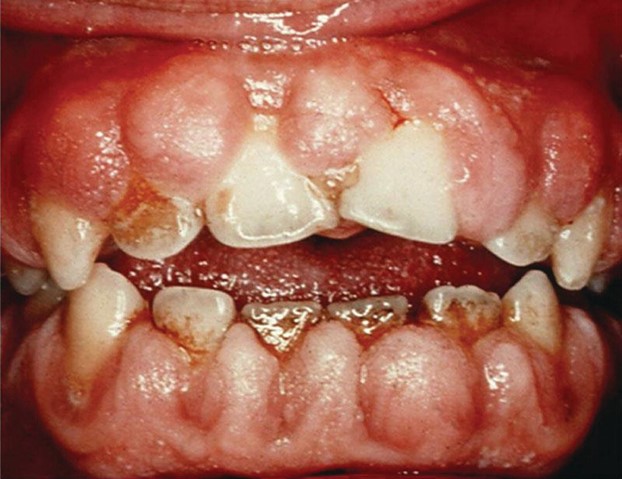A nurse is teaching a client who has a new prescription for phenytoin to treat a seizure disorder. Which of the following adverse effects should the nurse instruct the client to report immediately to the provider?
Tender, bleeding gums.
Increased facial hair.
Constipation.
Skin rash.
The Correct Answer is A
Choice A rationale:

Tender, bleeding gums could be a sign of phenytoin-induced gingival hyperplasia, a serious adverse effect of phenytoin. This condition requires immediate medical attention to prevent further complications.
Choice B rationale:
Increased facial hair is not a common adverse effect of phenytoin and may not require immediate medical attention. It could be due to other factors or conditions.
Choice C rationale:
Constipation is a common side effect of many medications, including phenytoin. While it should be monitored, it does not require immediate reporting to the provider unless severe or persistent.
Choice D rationale:
A skin rash can be an adverse effect of phenytoin, but it does not necessarily require immediate reporting unless it is severe, accompanied by other symptoms, or indicative of a serious allergic reaction.
Nursing Test Bank
Naxlex Comprehensive Predictor Exams
Related Questions
Correct Answer is A
Explanation
Dispose of the client's feces and urine in a special container.
Choice A rationale:
This is the correct choice. Brachytherapy involves the placement of a radiation source in or near the tumor. To minimize radiation exposure to others, the client's bodily fluids (feces and urine) should be considered radioactive and disposed of properly in a designated container.
Choice B rationale:
While limiting the time of visitors can be a good measure to reduce radiation exposure, it is not the priority intervention. The primary concern is proper handling and disposal of radioactive bodily fluids.
Choice C rationale:
Keeping the client's linens in the room until after removal of the radiation source is not the correct choice. Radioactive linens should be handled and laundered separately, following appropriate safety protocols.
Choice D rationale:
Providing one dosimeter badge for staff to share while caring for the client is not adequate. Each staff member involved in direct care should have their dosimeter badge to monitor their individual radiation exposure levels.
Correct Answer is B
Explanation
Choice A rationale:
An elevated WBC count (11,000/mm²) in a client starting treatment for MRSA infection may indicate an inflammatory response, but it is expected in this scenario, and the priority is not as high as other critical lab values.
Choice B rationale:
A serum pH of 7.25 indicates acidosis, which is a potentially life-threatening condition. In type 1 diabetes mellitus, diabetic ketoacidosis (DKA) is a common complication that can lead to metabolic acidosis. This lab result is a priority as it requires immediate attention.
Choice C rationale:
Hematocrit of 26% in a client with sickle cell disease might be low, but it is not the priority over the critically abnormal lab value of serum pH in option B.
Choice D rationale:
A urine specific gravity of 1.032 in a client diagnosed with dehydration is elevated, indicating concentrated urine due to dehydration. While dehydration is concerning, it is not as high-priority as the potentially life-threatening acidosis in option B.
Whether you are a student looking to ace your exams or a practicing nurse seeking to enhance your expertise , our nursing education contents will empower you with the confidence and competence to make a difference in the lives of patients and become a respected leader in the healthcare field.
Visit Naxlex, invest in your future and unlock endless possibilities with our unparalleled nursing education contents today
Report Wrong Answer on the Current Question
Do you disagree with the answer? If yes, what is your expected answer? Explain.
Kindly be descriptive with the issue you are facing.
